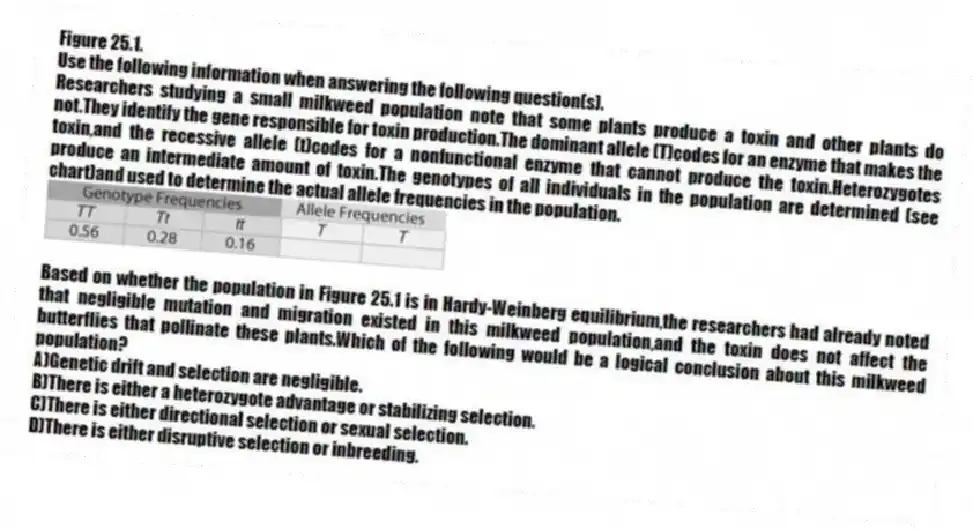
Figure 25.1.
Use the following information when answering the following question(s) .
Researchers studying a small milkweed population note that some plants produce a toxin and other plants do not.They identify the gene responsible for toxin production.The dominant allele (T) codes for an enzyme that makes the toxin,and the recessive allele (t) codes for a nonfunctional enzyme that cannot produce the toxin.Heterozygotes produce an intermediate amount of toxin.The genotypes of all individuals in the population are determined (see chart) and used to determine the actual allele frequencies in the population.

-Based on whether the population in Figure 25.1 is in Hardy-Weinberg equilibrium,the researchers had already noted that negligible mutation and migration existed in this milkweed population,and the toxin does not affect the butterflies that pollinate these plants.Which of the following would be a logical conclusion about this milkweed population?
A) Genetic drift and selection are negligible.
B) There is either a heterozygote advantage or stabilizing selection.
C) There is either directional selection or sexual selection.
D) There is either disruptive selection or inbreeding.
Correct Answer:
Verified
Q1: For a biologist studying a small fish
Q7: For biologists studying a large flatworm population
Q8: Genetic drift occurs in a population.Which of
Q9: Wikelski and Romero (2003)found that large marine
Q12: Currently the only predators of Galápagos marine
Q14: Cystic fibrosis is a genetic disorder in
Unlock this Answer For Free Now!
View this answer and more for free by performing one of the following actions

Scan the QR code to install the App and get 2 free unlocks

Unlock quizzes for free by uploading documents